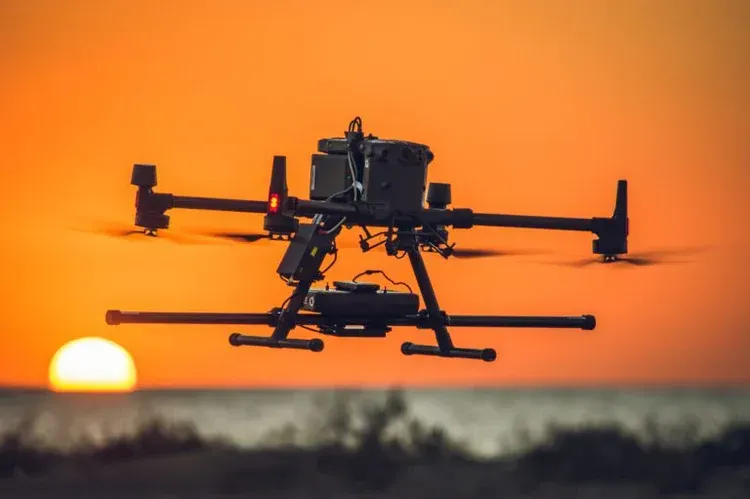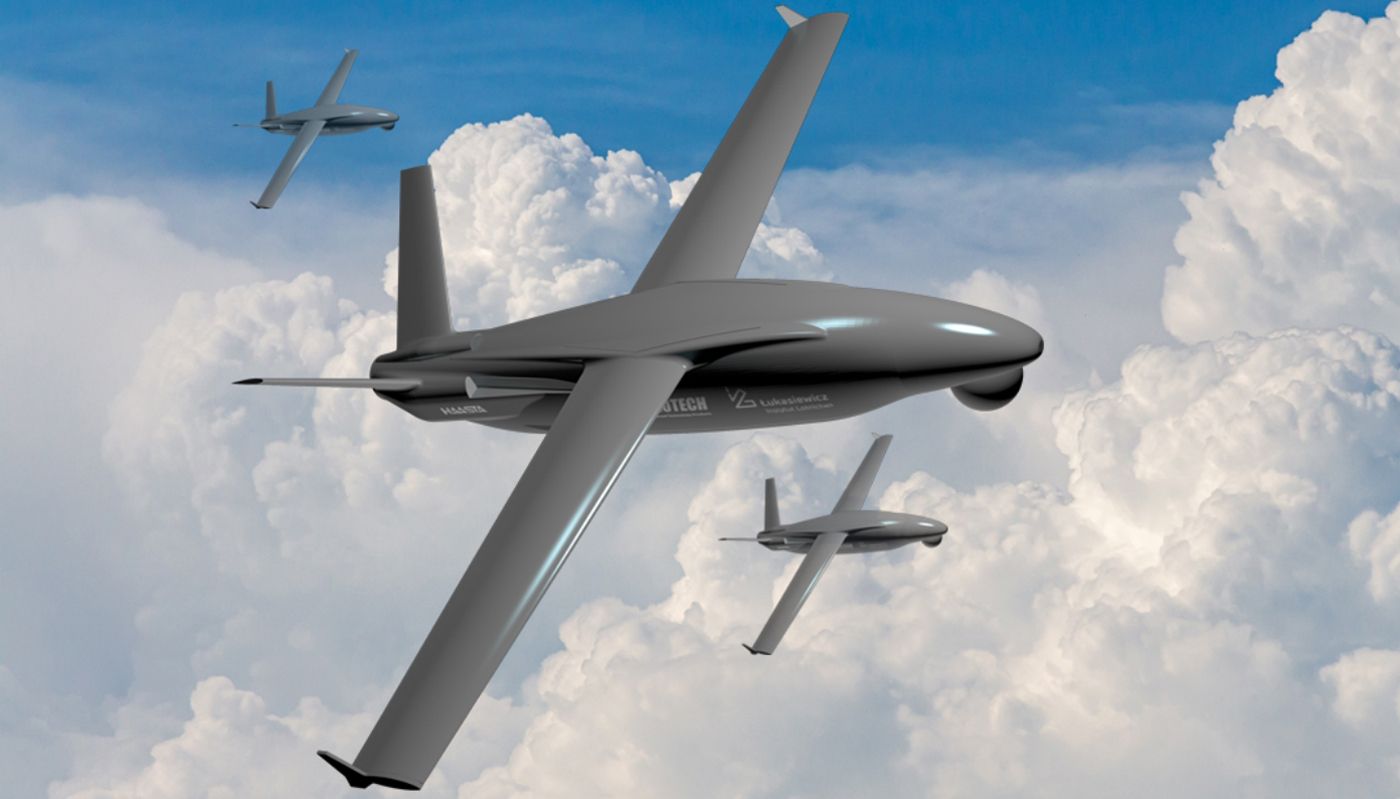The UK's Drone and UAV Sector: Driving Innovation and Economic Growth

The UK's drone and Unmanned Aerial Vehicle (UAV) sector is undergoing a remarkable transformation, presenting an unprecedented opportunity for innovation and substantial economic growth. This dynamic industry is rapidly expanding, with projections indicating it could contribute £45 billion to the UK economy by 2030, potentially fostering over 650,000 jobs and delivering 2.4 million tons in carbon emission savings.
Far beyond their initial military origins, drones are evolving into powerful business tools for civil and commercial applications, revolutionising diverse sectors from medical deliveries and emergency services to infrastructure inspection, agriculture, surveillance, and logistics. This growth is propelled by continuous technological advancements, including artificial intelligence, high-resolution sensors, lightweight composite materials, and enhanced battery technologies, alongside a crucial shift towards Beyond Visual Line of Sight (BVLOS) operations.
As regulatory frameworks adapt and public confidence grows, particularly for socially beneficial applications, the UK is poised at the tipping point of a transformative aerial revolution, ready to lead the world in developing solutions that promise not only enhanced efficiency and safety but also a more sustainable and connected future.
UK Soars into a New Era: Drone and UAV Sector Poised for Transformative Growth Across Manufacturing, Airports, Defence, and Civil Aerospace
The United Kingdom is rapidly positioning itself at the forefront of the global drone and Unmanned Aerial Vehicle (UAV) sector, driving innovation and economic growth across a diverse range of industries. From advanced manufacturing to the strategic transformation of airport operations, and from bolstering national defence to redefining civil aerospace, the UK's drone and UAV landscape is ripe with current and near-future opportunities, with a particular emphasis on the dynamic South East of England.
Economic Impact and Growth Trajectory
The drone sector is projected to make a significant impact on the UK economy. By 2030, drones could contribute up to £45 billion to the UK economy, lead to £22 billion in net cost savings, reduce carbon emissions by 2.4 million tons, and be associated with 650,000 jobs. The UK commercial UAV market alone generated USD 622.7 million in 2023 and is expected to reach USD 1,907.6 million by 2030, exhibiting a Compound Annual Growth Rate (CAGR) of 17.3% from 2024 to 2030.
The broader UK aerospace, defence, security, and space sectors collectively added £42.2 billion to the UK economy in 2024, marking a 64% increase over the last decade, with a total turnover of £100 billion (a 57% increase since 2014). These sectors directly employ 443,000 people, with two-thirds of these jobs located outside of London and the South East, and boast a productivity rate 42% higher than the UK average. Specifically, the UK aerospace sector contributed £10.9 billion to the economy in 2023 with a turnover of £30.5 billion, exporting £20 billion worth of goods. Productivity within aerospace has risen 25% since 2013, with an average output of £104,800 per worker.
Advanced Manufacturing: The Engine of Drone Innovation
Advanced manufacturing techniques are revolutionising drone production, offering substantial opportunities for UK companies.
- Additive Manufacturing (3D Printing): This technology is crucial for producing aerospace parts, enabling reduced production costs, minimised material waste, and accelerated development of new products. UK firms are actively investing in scalable additive manufacturing.
- AI, Automation, and Robotics: These technologies are being adopted to optimise production processes and improve efficiency in aerospace manufacturing. The UK is seeing its aerospace leaders at the forefront of AI-driven manufacturing. For instance, Hadean, a UK-based startup, has partnered with London-based Faculty Science to develop cutting-edge AI for military drones, focusing on object movement tracking, autonomous swarming development, and subject identification.
- Digitalisation: Supports new product design and development, supply chain integration for manufacturing and Maintenance, Repair, and Overhaul (MRO), and virtual certification to reduce costs.
- Lightweight Materials: Innovations in materials like carbon fibre composites, titanium alloys, and advanced aluminium alloys are enhancing performance, fuel efficiency, and durability in drone applications. The National Composites Centre (NCC) is collaborating with Vertical Aerospace on composite technologies for Electric Vertical Take-Off and Landing (eVTOL) aircraft, with an ambition to establish the UK as a global centre of excellence for eVTOL blades. The University of Central Lancashire (UCLan) has even developed the world’s first drone incorporating a graphene-skinned wing.
Airports and Urban Air Mobility: Reshaping Travel
The emergence of Urban Air Mobility (UAM) vehicles, including drones and eVTOLs, presents a transformative opportunity for airports and urban infrastructure.
- New Market Segments: Drones for cargo and surveillance, along with eVTOL aircraft for short journeys (fewer than 10 passengers) and Regional Air Mobility (RAM) for short/medium trips (10+ passengers), are key emerging segments. The UAM market is projected to be worth $45 billion globally by 2030.
- eVTOL Development: British companies are at the cutting edge. Vertical Aerospace's VX4 is designed to transport a pilot and up to four passengers over 100 miles at speeds over 200 mph with minimal noise and zero in-transit emissions. Its full-scale, piloted prototype became the first wholly new aircraft to fly in the UK in 20 years in September 2022 and is targeting certification by the middle of the decade.
- Pioneering Infrastructure: Coventry, England, became home to the world’s first urban drone airport, Air-One, in April 2022. This Hyundai-backed facility is intended for eVTOL air taxis and is demonstrating operational air corridors and ground infrastructure. Urban-Air Port is leading a coalition with Altitude Angel and Safeguard Vertiports to design this "Air Architecture".
- Hydrogen Hubs: Bristol Airport, located in the West of England's leading aerospace cluster, is spearheading Hydrogen South West, serving as a test bed for new technology and hosting Project Acorn, the first airside refuelling of hydrogen equipment at a major UK airport.
- Airspace Modernisation: The Department for Transport (DfT) and the Civil Aviation Authority (CAA) are implementing an Airspace Modernisation Strategy (AMS) to enable quicker, quieter, and cleaner journeys, accommodating new users like drones and VTOLs safely in UK airspace by 2040.
- UK Urban Air Mobility Consortium: This consortium, including Eve Air Mobility, NATS, Heathrow Airport, London City Airport, Skyports, Vertical Aerospace, Volocopter, and Atech, is working to build an integrated and scalable UAM ecosystem in the UK. Skyports plans to open its first vertiport in London in 2024.
Defence Sector: Enhancing National Security
Drones and UAVs have evolved significantly from their military origins and continue to be critical for defence applications.
- Intelligence, Surveillance, and Reconnaissance (ISR): Fixed-wing drones are widely used for long-range ISR missions [Previous conversation]. Nano-drones like the Black Hornet, Bug Drone, and Drone 40 (D40) are in service with the British Army and Royal Marines for clandestine surveillance [Previous conversation].
- Unmanned Combat Aerial Vehicles (UCAVs): Projects such as the BAE Systems Taranis technology demonstrator and the Anglo-French Future Combat Air System aim to develop UCAVs that can replace crewed fighter jets [Previous conversation].
- Heavy-Lift Capabilities: The Malloy T-150 (now part of BAE Systems) is a heavy-lift VTOL drone used by the Royal Navy for cargo and munition supply [Previous conversation].
- AI and Counter-UAS: The defence sector is seeing a magnifying requirement for AI-powered defence services, upgraded unmanned systems, and precision-guided weaponry. BAE Systems has acquired Kirintec, a UK-based firm specialising in counter-uncrewed air system technology, enhancing its cybersecurity and military services. Thales Group UK also has significant capabilities in UAVs and avionics.
- Increased Defence Spending: The UK government has committed an additional $6.4 billion to defence over 2023/24 and 2024/25, with a further $2.5 billion annually until 2027/28, reinforcing long-term investment in national security and driving demand for advanced systems.
Civil Aerospace Companies: Adapting and Expanding
Traditional aerospace companies are increasingly integrating drone and UAM technologies into their civil portfolios, creating new market segments and leveraging existing expertise.
- New Aircraft Segments: The Aerospace Technology Institute (ATI) predicts that while the conventional aircraft market will retain the largest share over the long term, the electric aircraft, drone, eVTOL, and regional air mobility markets will grow.
- Decarbonisation Efforts: The drive towards net-zero aviation by 2050 is stimulating innovation in electric batteries and hydrogen fuel cells as alternatives to fossil fuels. Rolls-Royce and easyJet have successfully tested an engine on 100% gaseous hydrogen fuel. The UK is well-positioned to capitalise on the opportunity presented by hydrogen-powered narrow-body aircraft.
- UK Strengths: The UK boasts world-leading capabilities in the design, manufacture, and support of engines, wings, advanced systems, aerostructures, and composite materials. Companies like Rolls-Royce, Airbus, BAE Systems, and GKN Aerospace are actively involved in these developments.
- SME Opportunities: The drone sector offers opportunities for new players and Small and Medium-sized Enterprises (SMEs), with the UK having the largest number of SME aerospace companies in Europe. The Future Flight Challenge and other government initiatives are actively supporting SMEs in this space.
South East England: A Hub for Drone Development
The South East of England is a crucial region for the UK's drone and UAV sector, fostering innovation and significant economic activity.
- London's Urban Airspace: London has actively developed policies and strategies for drone use. London City Airport and Heathrow Airport are integral members of the UK UAM Consortium. Skyports plans to establish its first vertiport in London in 2024, showcasing the city's commitment to future air mobility.
- Southampton's Aerospace Cluster: Southampton is a leader in aerospace and a vital coastal transport hub. The broader Hampshire aerospace and defence cluster supports over 18,000 jobs, and seven of the world's ten largest aerospace companies have a presence in the Solent region, which includes Southampton. The city is exploring smart city technologies, and the University of Southampton has developed unique drone platforms, including the world's first 3D-printed aircraft and the UK's first CAA-approved RPAS over 20kg. A BAE Systems-led autonomous systems test centre in the Solent supports both commercial and military applications. Efforts are underway to brand Southampton as a hub for drone research and development to attract inward investment.
- East of England's Specialisation: This region is strong in avionics, propulsion systems, and maintenance services. Its research parks and innovation centres are actively facilitating the development of unmanned aerial systems and cybersecurity solutions.
- South West England's Leadership: This region is a global leader in new aviation technologies for urban, sub-regional, and regional air mobility platforms. It boasts a well-established aerospace and aviation industry with a high concentration of major players, projects, start-ups, and technology companies. Its expertise spans aircraft design, systems integration, and defence manufacturing, with its strategic coastal location supporting naval defence activities.
Key Players Driving the Future
The UK's drone and UAV sector is powered by a mix of established giants and innovative new entrants:
- Traditional Aerospace: Rolls-Royce, Airbus, BAE Systems, and GKN Aerospace are adapting their extensive expertise to new drone and UAM opportunities.
- UAM/eVTOL Innovators: Vertical Aerospace, Urban-Air Port, Altitude Angel, and Safeguard Vertiports are leading the charge in developing new air vehicles and the necessary infrastructure. Other indigenous cargo vehicle producers include Dronamics and Arc Aerosystems.
- Defence and Technology: Thales Group UK, QinetiQ, and Hadean/Faculty Science are crucial for military applications and cutting-edge AI development.
- Research and Support: Institutions like the University of Southampton, UCLan's Civic Drone Centre, and government bodies like Innovate UK and the Aerospace Technology Institute (ATI) provide critical research, development, and funding support.
Enabling the Future: Policy, Investment, and Skills
To fully realise these opportunities, the UK is focusing on creating a supportive ecosystem:
- Regulatory Environment: The CAA is actively working on regulatory frameworks for Beyond Visual Line of Sight (BVLOS) drone flights and the integration of eVTOL taxis, acknowledging this as a key challenge and opportunity. The Innovation Hub, including the Regulatory Sandbox and Regulatory Lab, supports testing and development.
- Strategic Investment: Continuous government and industry investment in R&D is deemed crucial. The Future Flight Challenge, with £125 million from the government matched by £175 million from industry, is a prime example of this commitment.
- Skills Development: Addressing workforce shortages and developing new skills, particularly in areas like electrical systems, fuel cells, and cryogenics, is a high priority. The Aerospace Growth Partnership (AGP) is committed to supporting skills development at all levels of the supply chain.
In conclusion, the UK is making significant strides in the drone and UAV sector, leveraging its strong aerospace heritage, robust innovation ecosystem, and strategic investments to capture the vast opportunities in advanced manufacturing, urban air mobility, defence, and civil aerospace. While challenges remain, a concerted effort from industry and government aims to cement the UK’s position as a global leader in this transformative field.
Key Players Driving the Future
The UK's drone and UAV sector is powered by a mix of established giants and innovative new entrants:
- Traditional Aerospace: Rolls-Royce, Airbus, BAE Systems, and GKN Aerospace are adapting their extensive expertise to new drone and UAM opportunities.
- UAM/eVTOL Innovators: Vertical Aerospace, Urban-Air Port, Altitude Angel, and Safeguard Vertiports are leading the charge in developing new air vehicles and the necessary infrastructure. Other indigenous cargo vehicle producers include Dronamics and Arc Aerosystems.
- Defence and Technology: Thales Group UK, QinetiQ, and Hadean/Faculty Science are crucial for military applications and cutting-edge AI development.
- Research and Support: Institutions like the University of Southampton, UCLan's Civic Drone Centre, and government bodies like Innovate UK and the Aerospace Technology Institute (ATI) provide critical research, development, and funding support.
Enabling the Future: Policy, Investment, and Skills
To fully realise these opportunities, the UK is focusing on creating a supportive ecosystem:
- Regulatory Environment: The CAA is actively working on regulatory frameworks for Beyond Visual Line of Sight (BVLOS) drone flights and the integration of eVTOL taxis, acknowledging this as a key challenge and opportunity. The Innovation Hub, including the Regulatory Sandbox and Regulatory Lab, supports testing and development.
- Strategic Investment: Continuous government and industry investment in R&D is deemed crucial. The Future Flight Challenge, with £125 million from the government matched by £175 million from industry, is a prime example of this commitment.
- Skills Development: Addressing workforce shortages and developing new skills, particularly in areas like electrical systems, fuel cells, and cryogenics, is a high priority. The Aerospace Growth Partnership (AGP) is committed to supporting skills development at all levels of the supply chain.
In conclusion, the UK is making significant strides in the drone and UAV sector, leveraging its strong aerospace heritage, robust innovation ecosystem, and strategic investments to capture the vast opportunities in advanced manufacturing, urban air mobility, defence, and civil aerospace. While challenges remain, a concerted effort from industry and government aims to cement the UK’s position as a global leader in this transformative field.
Drones and UAVs - An industry Guide
Drones, also known as Unmanned Aerial Vehicles (UAVs) or Unmanned Aircraft Systems (UAS), encompass a diverse range of form factors, each tailored for specific applications in both civil and defense sectors. These aircraft operate without a human pilot onboard, relying on remote control or varying degrees of autonomy.
Here's a comparison of key drone form factors and their primary sector classifications:
I. By Wing Configuration
Drone designs are fundamentally categorized by how they generate lift and sustain flight, impacting their speed, endurance, and operational agility.
- Fixed Wing Drones
- Characteristics: These drones gain lift from wings, similar to conventional aircraft, allowing for long-range capabilities and generally faster flight speeds. They are efficient for covering large areas but typically require a runway for take-off and landing, or a catapult launcher and net/parachute recovery, unless they are hybrid variants.
- Applications:Civil/Commercial: Professional mapping and surveying over extensive areas, surveillance, intelligence gathering, and potentially longer-distance medical deliveries. One participant in a UK drone industry report noted they opted for fixed-wing drones in busier areas due to less noise and a less "daunting" appearance compared to multi-rotors.
- Defense/Government: Used for intelligence, surveillance, and reconnaissance (ISR) missions, such as the BAE Systems HERTI (deployed in Afghanistan), BAE Mantis (MALE UAV demonstrator), QinetiQ Zephyr (High Altitude Long Endurance - HALE UAV), and the Stalker VXE30 (fixed-wing VTOL for ISR).
- Sector Dominance: Primarily favored for defense and commercial applications requiring long-range and endurance.
- Rotary Wing Drones (Multi-Rotor, Quadcopters)
- Characteristics: These drones generate lift using spinning rotors, much like helicopters. They excel at vertical take-off and landing (VTOL), hovering in place, and operating in confined spaces. This versatility makes them ideal for intricate tasks and urban environments. Types include single rotor, multi-rotor (e.g., quadcopter, hexacopter, octocopter).
- Applications:Civil/Commercial: Dominate the commercial drone market, accounting for over 75% of revenue share in 2023. Widely used in agriculture (crop monitoring, spraying), construction (site surveys, progress monitoring, structural inspections), surveillance, logistics, media, entertainment, and real estate for aerial imagery and video. Also used for close-range inspection of assets like bridges and roofs. Examples include the DJI Phantom for consumer use and DJI Inspire for professional filmmaking.
- Defense/Government: Small rotary drones like the Black Hornet (nano-drone for the British Army), Bug Drone (nano-drone for various payloads including listening), Drone 40 (D40) (nano UAV/loitering munition for surveillance), and Ghost MK4 (VTOL helicopter used by Royal Marines) are in service. The Leonardo Proteus is an uncrewed rotorcraft in development for the Royal Navy.
- Sector Dominance: Strong in both commercial and defense sectors, especially for tasks requiring agility and precision.
- Hybrid Drones
- Characteristics: These designs combine the best features of both fixed-wing and rotary-wing aircraft, offering VTOL capability for versatile take-off and landing, coupled with wings for efficient forward flight and longer endurance. They are often designed with redundancy in propulsion systems to enhance safety.
- Applications:Civil/Commercial: Identified as the most lucrative product segment in the commercial UAV market, registering the fastest growth. Ideal for tasks requiring both hovering precision and extended range, such as medical deliveries in urban areas, traffic incident response where rapid arrival and detailed analysis are needed, construction and regeneration surveying, and fire and rescue operations. VTOL Technologies developed a Hybrid Flying Wing for energy distribution, transportation, logistics, and agriculture.
- Defense/Government: Heavy-lift VTOL drones like the Malloy T-150 (now part of BAE Systems) are used by the Royal Navy for cargo and munition supply operations.
- Sector Dominance: Emerging as a critical form factor across commercial, civil, and defense applications due to their balanced performance.
II. By Size/Weight Classification
Drones are also categorized by their Maximum Take-Off Weight (MTOW), which often dictates their capabilities, regulatory requirements, and typical use cases.
- Nano/Micro Drones (< 2 kg)
- Characteristics: These are very small, lightweight drones, often fitting in the palm of a hand (e.g., Black Hornet weighing less than 200 grams). They have limited range and endurance (e.g., 300m range for Black Hornet).
- Applications:Civil/Commercial: Leisure use, toy market (tens of thousands in the UK), personal photography, and specialized inspection of hard-to-reach areas.
- Defense/Government: Primarily for clandestine surveillance and reconnaissance in military operations (e.g., Black Hornet for exploring buildings, Bug Drone for various sensor payloads). The Drone 40 (D40), a nano UAV/loitering munition, was used for surveillance in Mali.
- Sector Dominance: Strong in defense and consumer/hobbyist markets, with some specialized commercial uses.
- Small Drones (2 kg - < 25 kg)
- Characteristics: Offer a wider range and endurance than nano/micro drones, while remaining relatively portable. Subject to specific airworthiness requirements if exceeding 20kg.
- Applications:Civil/Commercial: Professional mapping (e.g., Parrot/senseFly eBee), inspection, and surveillance. They can carry more advanced payloads than micro-drones.
- Defense/Government: Used for surveillance and intelligence gathering, such as the Puma AE (approx. 12 lbs, 9ft wingspan) and some of Selex ES's battlefield UAVs.
- Sector Dominance: Significant for commercial services and tactical military applications.
- Medium Drones (25 kg - < 150 kg)
- Characteristics: Capable of carrying larger payloads and achieving longer endurance. For example, the Stalker VXE30 has a 5m wingspan and weighs 20kg, with an 8-hour flight time.
- Applications:Civil/Commercial: Potential for inspecting pipelines/power cables, crop spraying, and search and rescue.
- Defense/Government: Border surveillance, forest fire monitoring, and more robust ISR missions.
- Sector Dominance: Important for specialized commercial tasks and defense operations requiring substantial capabilities.
- Large Drones (> 150 kg)
- Characteristics: These are very large aircraft designed for heavy payloads and very long endurance, potentially remaining airborne for days or months and traveling thousands of miles. They are significantly more costly.
- Applications:Civil/Commercial: While none are currently used commercially, there is potential for cargo transport.
- Defense/Government: Used for heavy-lift cargo and high-level strategic missions, like the Malloy T-150 (70kg payload) deployed with the Royal Navy's Carrier Strike Group.
- Sector Dominance: Predominantly in the defense sector, with future potential in heavy-lift commercial logistics.
III. By Operational Altitude/Endurance
Some military and specialized civil drones are classified by their operational ceiling and flight duration, reflecting their strategic capabilities.
- Medium Altitude Long Endurance (MALE) UAVs
- Characteristics: Capable of flying up to 30,000 feet and having a range of over 200 km.
- Applications: Primarily military for armed reconnaissance and surveillance (e.g., MQ-9 Reaper used by the RAF), and technology demonstrators (e.g., BAE Mantis).
- Sector Dominance: Predominantly defense.
- High Altitude Long Endurance (HALE) UAVs
- Characteristics: Designed for operations above 30,000 feet with potentially indefinite range.
- Applications: Strategic surveillance and scientific research (e.g., QinetiQ Zephyr, which achieved the world's longest unrefuelled UAV flight), and demonstrator projects like BAE Systems PHASA-35.
- Sector Dominance: Primarily defense and high-level scientific/atmospheric research.
IV. Cross-Cutting Form Factors and Technologies
- Unmanned Combat Aerial Vehicles (UCAVs): Specifically designed for combat operations. Examples include the BAE Taranis technology demonstrator and the Anglo-French Future Combat Air System. These replace expensive crewed fighter jets.
- Electric Vertical Take-Off and Landing (eVTOL) Aircraft: While often discussed in the context of Urban Air Mobility (UAM), these are distinct from smaller drones and are primarily for passenger and freight transport, such as air taxis. Coventry, England, opened the world's first urban drone airport (Air-One) in 2022 with the intent to use it for eVTOL air taxis.
- Manufacturing Technologies: 3D printing is revolutionizing drone and UAV manufacturing by allowing for accelerated design iterations, reduced component weight, and lower production costs. Companies like Prototal UK offer advanced 3D printing solutions for airframes, structural parts, motor mounts, sensor/antenna housings, and payload bays, using materials like carbon fiber reinforced polymers and flame retardant nylons.
- Autonomy: Drones are evolving from remotely piloted to semi-autonomous and fully autonomous, using advanced AI, machine learning, and navigation systems. Autonomous drones are projected to capture a significant revenue share in the commercial market by 2032. This includes systems that can operate Beyond Visual Line of Sight (BVLOS), which is a significant technical and regulatory challenge for scaling drone operations.
The landscape of drone form factors is continually evolving, driven by technological advancements in materials, propulsion (including electric, hybrid, and hydrogen fuel cells), sensors, and control systems, alongside changing regulatory frameworks and market demands.





